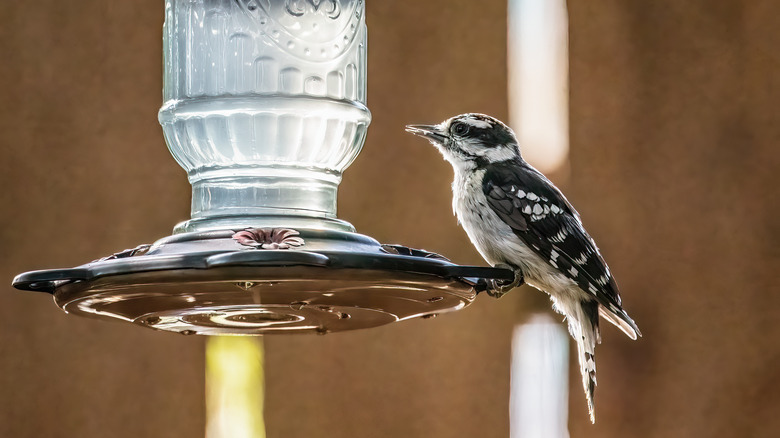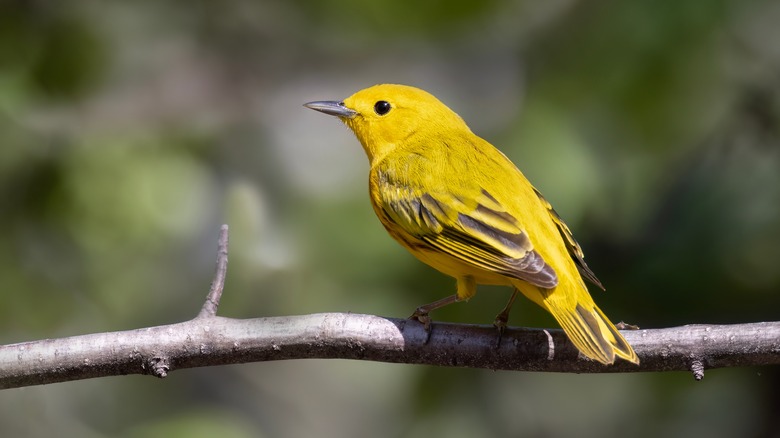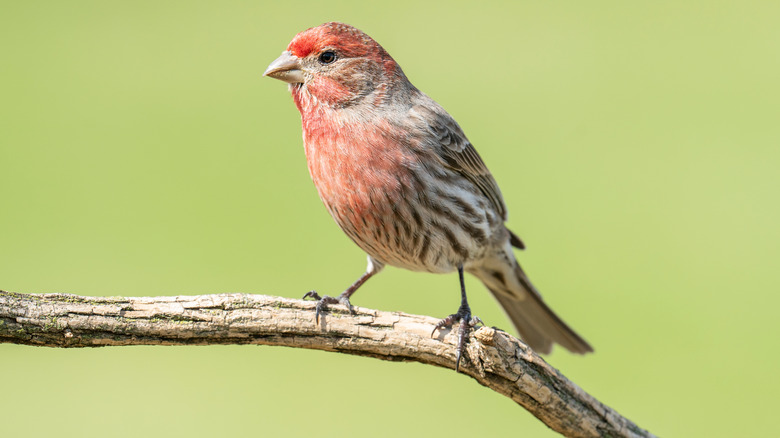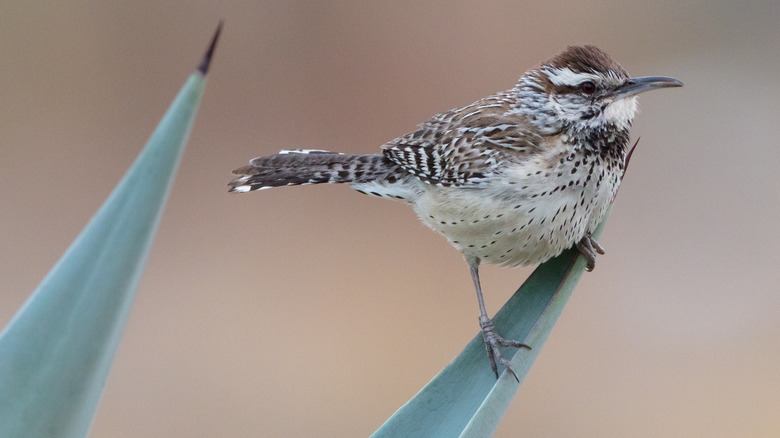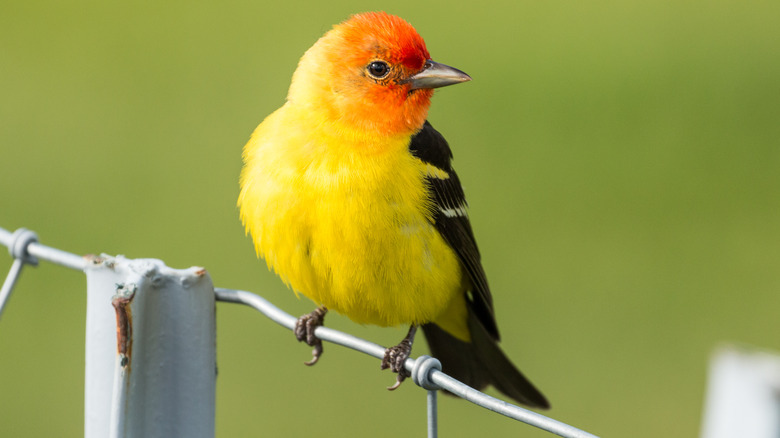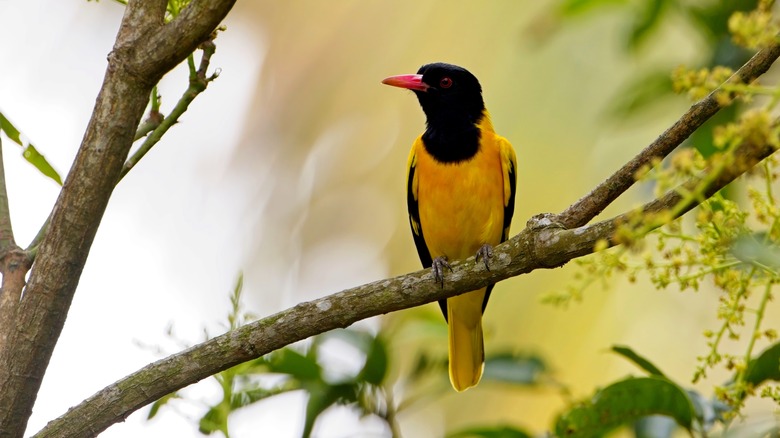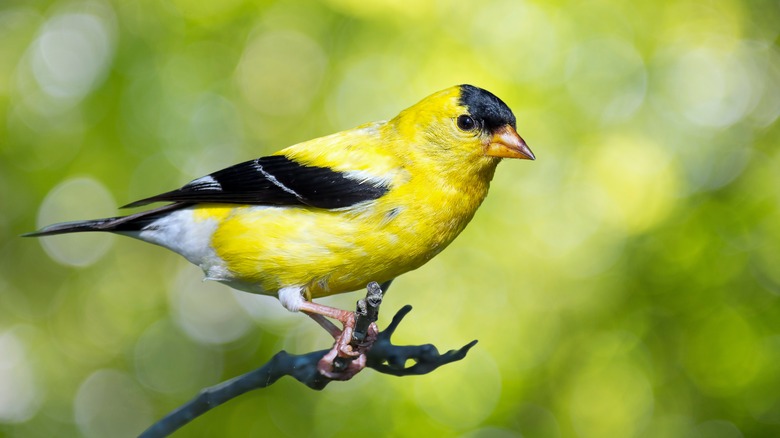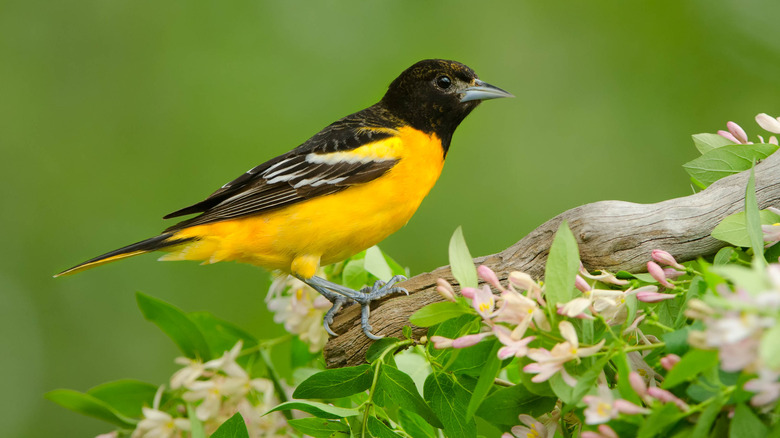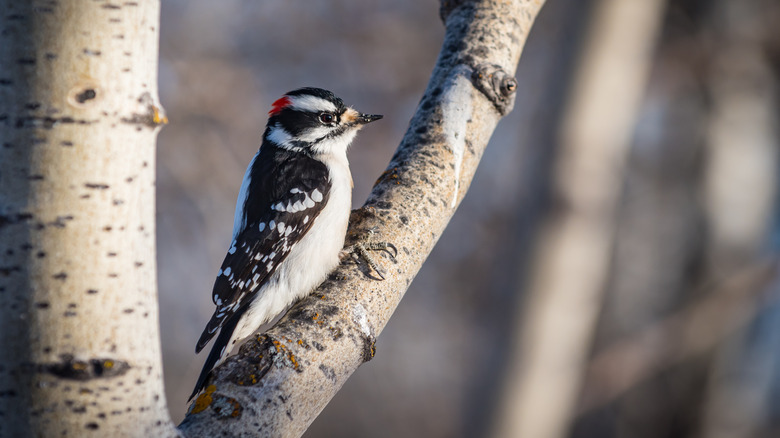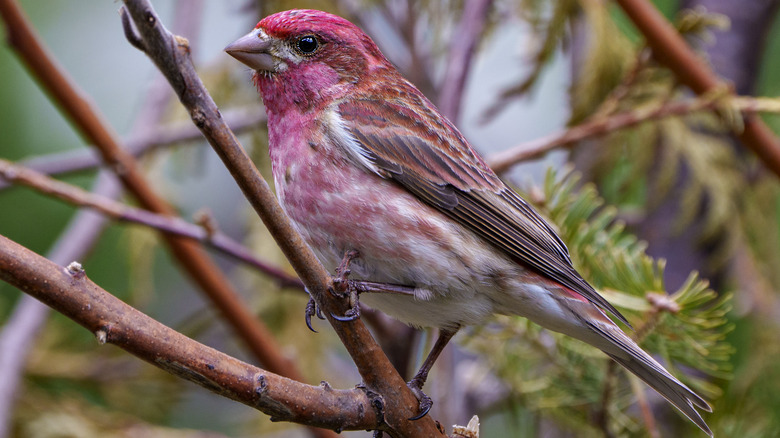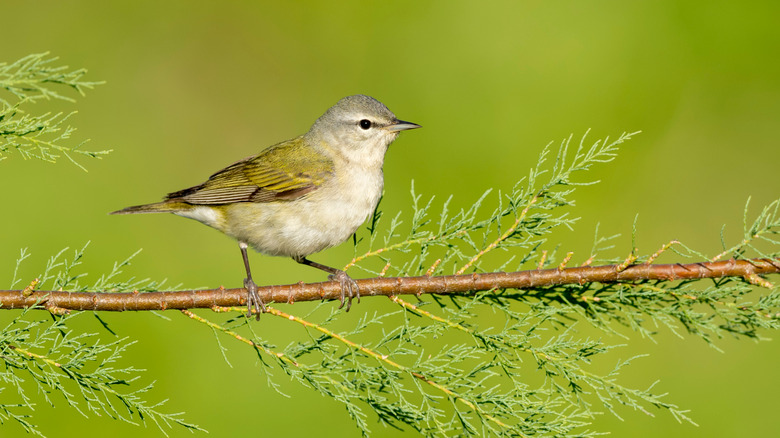10 Birds You Might Find Visiting Your Hummingbird Feeders This Spring
With the warm weather of spring comes flocks of beautiful birds. If you're like many birdwatchers, you likely put out nectar to attract hummingbirds to your yard. The sugary water gives them more energy to fuel their tiny, hardworking bodies. This spring, as you wait for a glimpse of glittering iridescent wings, your bird feeder might be visited by several other bird species. Finches, orioles, and woodpeckers are commonly spotted taking a sip of nectar too. If you don't know who to expect, identifying your visitor might be tricky. So, we've put together a list of species observed that feed at a hummingbird feeder.
A typical hummingbird feeder uses gravity and a bottom chamber that has tiny exterior holes. Hummingbirds insert their beaks into the holes and use their tongues to drink the sugar water. Bird species like orioles are popular guests because they also drink nectar. Other birds opportunistically use their narrow beaks or long tongues to feed despite the nectar providing little nutritional value. Regardless of whether the nectar is a meal or a snack, having more birds in your yard is a delight.
1. American yellow warbler
You might spot an American yellow warbler at your feeder. They can be seen throughout North America before they migrate to Central America and South America for the winter. Tell them apart by their bright lemon-colored feathers and big black eyes. American yellow warblers may also have some gray and green wing and tail feathers. Though they can't rely on sugar water for nutrition, they've been caught taking a drink from a hummingbird feeder.
2. House finch
If you watch your feeder long enough, you're likely to spot a finch or two. Finches are known to visit hummingbird feeders. The house finch has a brown, orange, or red face, a rosy-colored breast, and brown stripes. The stripes are more defined for juveniles but seemingly blur as the bird matures. House finches are native to the southwest of North America but are commonly found throughout the continent as well as in Central America.
3. Cactus wren
The narrow, curved beak of a cactus wren draws comparison to that of the hummingbird. It's this shape that allows them to access the sugar water in the feeder. Their distinctive white eyebrow makes them easy to identify. Additionally, when compared to other desert birds, they have more spots, stripes, and bar-type markings. Cactus wrens are found in the southwestern United States and Mexico.
4. Western tanager
If you live in the western parts of North America and northern Mexico, you might be visited by the western tanager. Males will be easier to identify with their bright red faces and yellow and black bodies. Females have paler yellow and gray feathers. Bird watchers have also noted two wing bars, which are a type of field mark used to identify bird species.
5. Hooded oriole
Orioles, like hummingbirds, are nectar drinkers, so they've been widely observed at hummingbird feeders. You'll be able to identify hooded oriole males by their bright orange and black body. The black usually covers their face, throat, wings, and tail. Their wings typically have white stripes. Females have a more overall coloring of green-leaning or brownish-yellow. Hooded orioles are most commonly seen in the southwestern United States and Mexico.
6. American goldfinch
This spring and summer, you're bound to see an American goldfinch. This species expands across North America and parts of Mexico. American goldfinches look different depending on the season. In the summer, males are identified by their yellow bodies and black foreheads, wings, and tails. Females have more muted yellow-green feathers. Both males and females tend to become grayer or browner as the winter approaches.
7. Baltimore oriole
Hummingbird feeders are bound to attract some orioles to your yard. They love it so much that there are oriole-specific nectar feeders to make it easier for them to drink comfortably. Baltimore oriole males are strikingly orange and black and, therefore, easy to identify. The females tend to have browner and less vivid-orange feathers. Be on the lookout for these birds in the eastern half of the United States and southeastern Canada.
8. Downy woodpeckers
It's hard to imagine a woodpecker doing anything else but pecking away at a tree. However, they have been observed dining on hummingbird feeder nectar with the long tongues they typically use to slurp up bugs. Downy woodpeckers are common throughout North America. Famously, males have a red nape at the back of their black and white striped head. The barring on their wings and tail are also highly characteristic.
9. Purple finch
Commonly found on North America's eastern and western coastlines, the purple finch is a beautiful guest to catch at your feeder. Females have brown and white feathers, a complex face pattern, and a striped belly. Males are easier to identify due to their magenta-leaning red foreheads and foreparts. Many of their wing feathers may also have a reddish hue, creating an overlay of color.
10. Tennessee warbler
Warblers are another species of bird that drinks nectar. Typically, they get it from flowers during migration, but they'll gladly stop to snack at your hummingbird feeder. Tennessee warblers migrate throughout eastern and midwestern parts of North America and south into Mexico. In the spring, males will appear white with a green back, gray cap, and white eyebrow. Females are similar, with more muted colors. Both are more vibrantly yellow in the fall.
